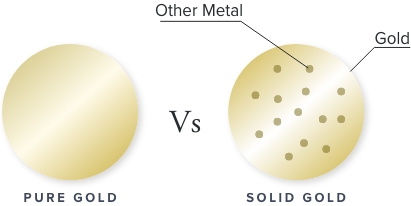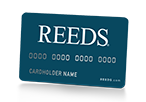Gold plated jewelry refers to any jewelry where a base metal is coated with gold. There are a few different processes that do this—mechanical plating and electroplating, for example—and also varying levels of thickness in the coating. The thicker the plating, the longer the gold will endure without wearing away.
MEANING AND DIFFERENCES
Gold Vermeil Vs Gold Plated Vs Gold Filled
Everything You Want To Know About
Gold Plated, Gold Filled, & Gold Vermeil Jewelry


The world of gold jewelry can be daunting—there seem to be so many terms to understand. The good news is these terms aren’t here to confuse you—in fact, they exist specifically to increase the levels of transparency between jewelry sellers and buyers. Basically, so you understand exactly how much gold is in a piece, how it was made, and how likely its luster is to last. Luckily, it just takes a few minutes of your time to get the hang of the industry lingo—so read through our quick intro to gold terminology, or just skip ahead to the section you need to know about.
About Gold Plating, Filling & Vermeil
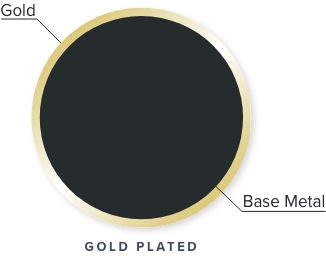

Gold plated jewelry refers to any jewelry where a base metal is coated with gold. There are a few different processes that do this—mechanical plating and electroplating, for example—and also varying levels of thickness in the coating. The thicker the plating, the longer the gold will endure without wearing away.


Gold vermeil products start with a sterling silver base and then are coated or plated with gold. Gold vermeil stands apart from common plating because it’s a bit thicker and may better weather repeated wearings. One benefit of gold vermeil is that it can be more hypoallergenic than some other plated options, which may use nickel as a base. (And in case you’re wondering, “vermeil” is pronounced vehr-may.)
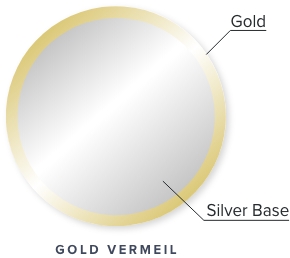

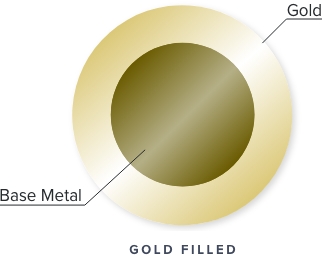

Gold filled jewelry (or gold overlay, or rolled gold plate) is used to describe jewelry with a layer of at least 10 karat gold mechanically applied to a base metal, according to the Federal Trade Commission, which helps regulate transparency in the jewelry industry by helping define and outline terms to truthfully describe a piece of jewelry’s content so you can tell if it’s worth it. When you inspect your jewelry, you should see an abbreviation that lets you know the karat quality of the gold and the plating type, for instance, 10K RGP means 10 karat rolled gold plate.
Gold filled jewelry (or gold overlay, or rolled gold plate) is used to describe jewelry with a layer of at least 10 karat gold mechanically applied to a base metal, according to the Federal Trade Commission, which helps regulate transparency in the jewelry industry by helping define and outline terms to truthfully describe a piece of jewelry’s content so you can tell if it’s worth it. When you inspect your jewelry, you should see an abbreviation that lets you know the karat quality of the gold and the plating type, for instance, 10K RGP means 10 karat rolled gold plate.


A Closer Look: This Versus That
Both gold plated and gold filled jewelry feature a base metal that’s coated in gold—but it’s the thickness of the coating and the process that sets them apart. A filled piece is created by melting at least 5% gold by weight onto the base metal, whereas a gold plated piece will typically contain much less, and possibly tarnish or wear away faster.
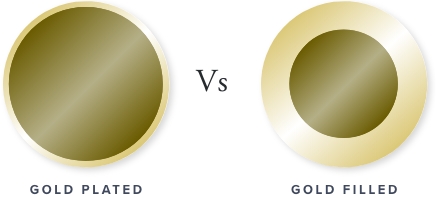

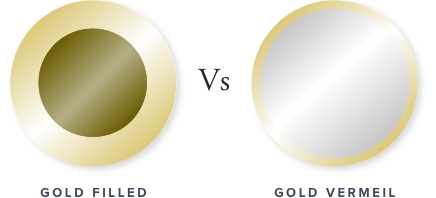

While gold vermeil is typically a step above most plated pieces (featuring a thicker layer of gold than traditional gold plated pieces), gold filled jewelry will still outperform it in gold by weight and durability against everyday wear—meaning a piece whose luster lasts for years to come.
While gold vermeil is typically a step above most plated pieces (featuring a thicker layer of gold than traditional gold plated pieces), gold filled jewelry will still outperform it in gold by weight and durability against everyday wear—meaning a piece whose luster lasts for years to come.


The two potential differences between gold plated and gold vermeil jewelry are this—gold vermeil will always use sterling silver as a base metal, and will always have a thicker layer of gold compared to traditional plating. So if you have the option, go for the vermeil to ensure a golden shine that lasts longer.
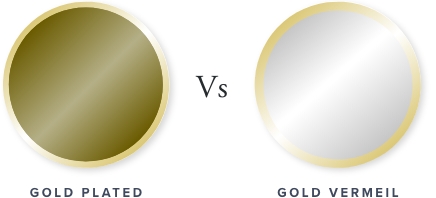

The Karat Question: Pure Gold, Solid Gold & More


A karat mark tells you how much gold is in the piece and ranges up to 24 karat—pure gold. Since gold is a soft metal that can easily scratch, it’s common to find it combined with other metals to make it harder and more durable. You can figure out how much gold vs other metals are in your piece by looking at the karat mark. The sum of the karat plus other metals will always equal 24. The equation would look like XX karat + XX other metals = 24.




A 10k piece of jewelry features 10 parts gold and 14 parts of other metal. A 14k piece of jewelry features 14 parts gold and 10 parts of other metals.
A 10k piece of jewelry features 10 parts gold and 14 parts of other metal. A 14k piece of jewelry features 14 parts gold and 10 parts of other metals.


A 14k piece of jewelry features 14 parts gold and 10 parts of other metal. An 18k piece of jewelry features 18 parts gold and 6 parts of other metals.




An 18k piece of jewelry features 18 parts gold and 6 parts of other metal. A 24k piece of jewelry is made of pure gold, with no other metals. It’s important to note that the higher the karat mark and closer to pure gold, the softer (and possibly more scratchable) the piece might be.
An 18k piece of jewelry features 18 parts gold and 6 parts of other metal. A 24k piece of jewelry is made of pure gold, with no other metals. It’s important to note that the higher the karat mark and closer to pure gold, the softer (and possibly more scratchable) the piece might be.


Solid gold doesn’t necessarily mean pure gold—it just means that the piece isn’t hollow. Solid gold can be made of 14k gold, meaning that it’s been combined with 14 parts gold and 10 parts of other metal, but is solid throughout.
